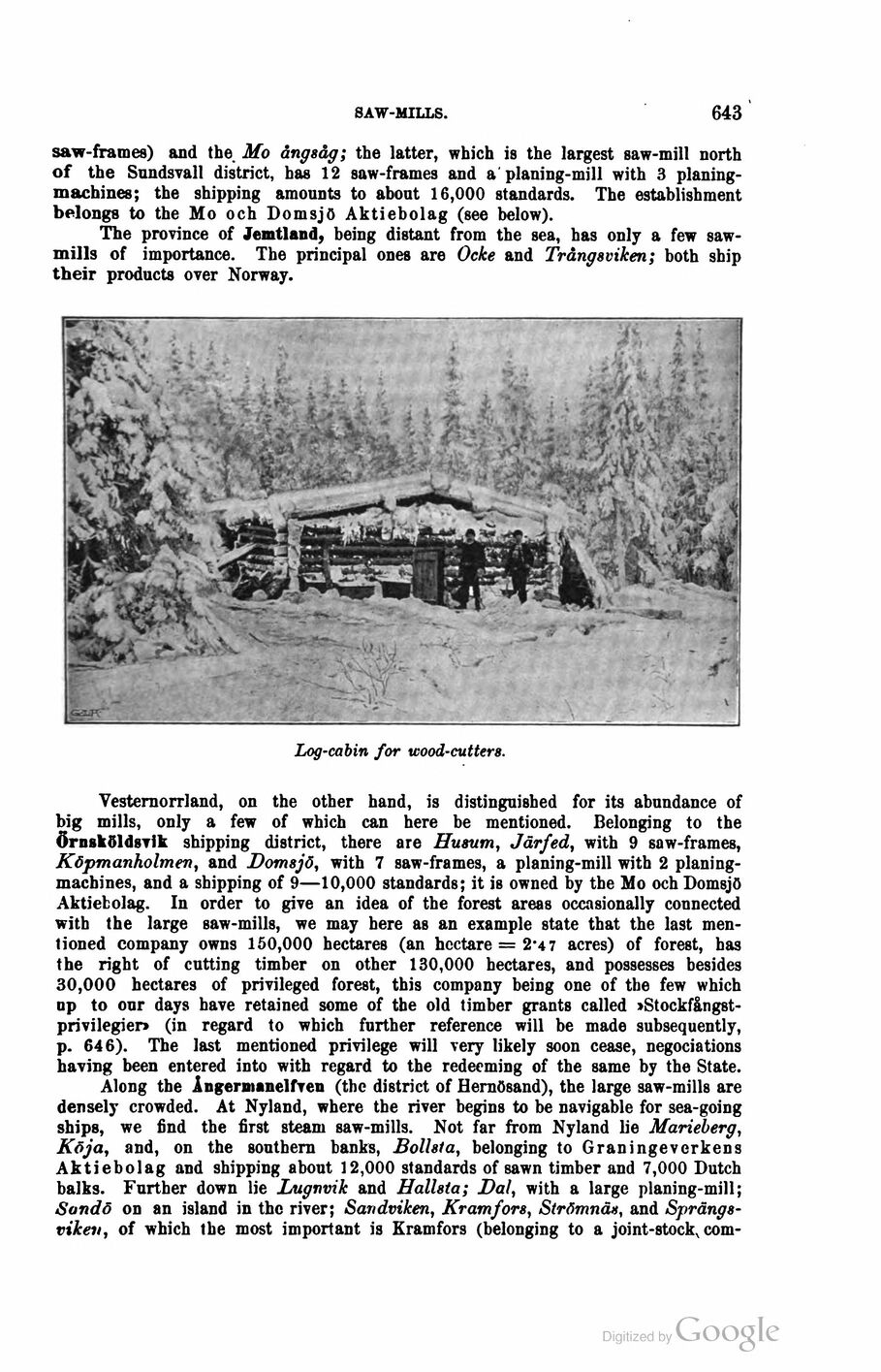
Full resolution (JPEG) - On this page / på denna sida - Second part - VII. Forestry - 2. Forest Industries. By E. Arosenius, Ph. D., Royal Central Bureau of Statistics, Stockholm - Saw-Mills

<< prev. page << föreg. sida << >> nästa sida >> next page >>
Below is the raw OCR text
from the above scanned image.
Do you see an error? Proofread the page now!
Här nedan syns maskintolkade texten från faksimilbilden ovan.
Ser du något fel? Korrekturläs sidan nu!
This page has never been proofread. / Denna sida har aldrig korrekturlästs.
SAW-MILLS.
643
saw-frames) and the Mo ångsåg; the latter, which is the largest saw-mill north
of the Sundsvall district, has 12 saw-frames and a planing-mill with 3
planing-machines; the shipping amounts to about 16,000 standards. The establishment
belongs to the Mo och Domsjö Aktiebolag (see below).
The province of Jemtland, being distant from the sea, has only a few
sawmills of importance. The principal ones are Ocke and Trångsviken; both ship
their products over Norway.
Log-cabin for wood-cutters.
Vesternorrland, on the other hand, is distinguished for its abundance of
big mills, only a few of which can here be mentioned. Belonging to the
Örnsköldsvik shipping district, there are Husum, Järfed, with 9 saw-frames,
Köpmanholmen, and Domsjö, with 7 saw-frames, a planing-mill with 2
planing-machines, and a shipping of 9—10,000 standards; it is owned by the Mo och Domsjö
Aktiebolag. In order to give an idea of the forest areas occasionally connected
with the large saw-mills, we may here as an example state that the last
mentioned company owns 150,000 hectares (an hectare = 2-47 acres) of forest, has
the right of cutting timber on other 130,000 hectares, and possesses besides
30,000 hectares of privileged forest, this company being one of the few which
up to our days have retained some of the old timber grants called
»Stockfångst-privilegier» (in regard to which further reference will be made subsequently,
p. 646). The last mentioned privilege will very likely soon cease, negociations
having been entered into with regard to the redeeming of the same by the State.
Along the Ingermanelfven (the district of Hernösand), the large saw-mills are
densely crowded. At Nyland, where the river begins to be navigable for sea-going
ships, we find the first steam saw-mills. Not far from Nyland lie Marieberg,
Köja, and, on the southern banks, Bollsia, belonging to Graningeverkens
Aktiebolag and shipping about 12,000 standards of sawn timber and 7,000 Dutch
balks. Further down lie Lugnvik and Hallsta; Dal, with a large planing-mill;
Sandö on an island in the river; Sandviken, Kramfors, Strömnäs, and
Sprängs-viken, of which the most important is Kramfors (belonging to a joint-stock, com-
<< prev. page << föreg. sida << >> nästa sida >> next page >>